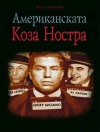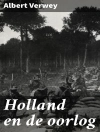The Cold War was the longest conflict in American history, and the defining event of the second half of the twentieth century. Since its recent and abrupt cessation, we have only begun to measure the effects of the Cold War on American, Soviet, post-Soviet, and international military strategy, economics, domestic policy, and popular culture.
The Columbia Guide to the Cold War is the first in a series of guides to American history and culture that will offer a wealth of interpretive information in different formats to students, scholars, and general readers alike. This reference contains narrative essays on key events and issues, and also features an A-to-Z encyclopedia, a concise chronology, and an annotated resource section listing books, articles, films, novels, web sites, and CD-ROMs on Cold War themes.
Tabella dei contenuti
Acknowledgments
Introduction
Part I. Narrative Overview
1. The Cold War and Its Historians
2. The Cold War Begins: 1945–1953
3. From the Thaw to the Brink: 1953–1962
4. Vietnam and Detente: 1962–1975
5. The New Cold War: 1976–1984
6. The End of the Cold War: 1985–1990
Part II. The Cold War A to Z
Part III. Concise Chronology
Part IV. Resources
Introduction: Looking for Resources
1. Topics
2. Memoirs and Biographies
3. Bibliographies, Reference Works, and Primary-Source Collections
4. Journals, Projects/Archives, and Presidential Libraries
5. Electronic Resources
6. Films and Novels
Appendix: The Costs of the Cold War
Index
Circa l’autore
Michael Kort is a professor of social science at Boston University’s College of General Studies. He is the author of several books on the Soviet Union and Cold War history including
The Handbook of the Former Soviet Union; The Soviet Colossus: History and Aftermath; and
The Cold War.












